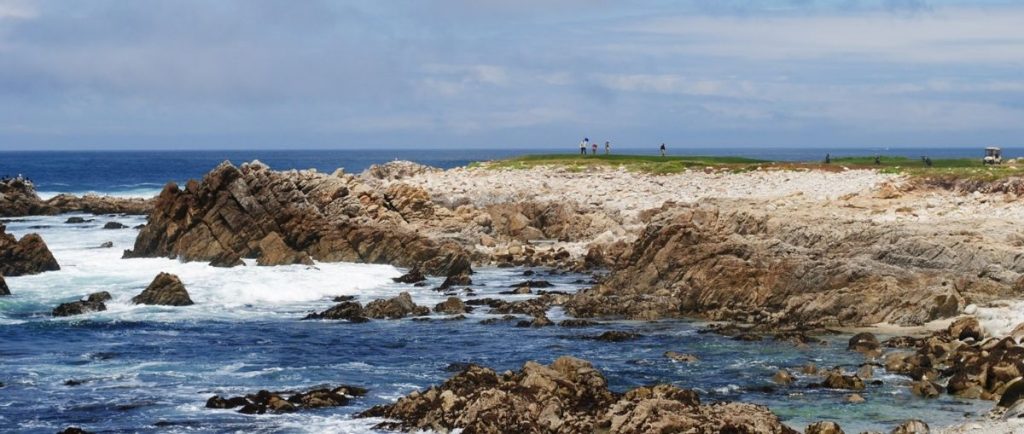 Grass areas on golf courses can be affected by salt in different ways; coastal courses are susceptible to flooding or being splashed with seawater, while some courses use recycled or saline water for irrigation. Additionally, certain soils naturally contain high levels of salt, which can compromise turf quality.
Grass areas on golf courses can be affected by salt in different ways; coastal courses are susceptible to flooding or being splashed with seawater, while some courses use recycled or saline water for irrigation. Additionally, certain soils naturally contain high levels of salt, which can compromise turf quality.
To ensure the long-term viability of turf areas and enhance their tolerance to saline conditions, it is essential to utilize grass species that are highly tolerant to salt. DLF, has been conducting extensive tests on their entire turfgrass portfolio for salt tolerance. All new varieties undergo regular screening to assess their salt tolerance. The testing process has been continually refined. Evaluations are carried out in controlled conditions within greenhouses. Mature plant populations are tested in five replicates. Some grass varieties have undergone multiple tests over the years to validate the data and strengthen the reliability of the results.
By incorporating salt-tolerant grasses, the likelihood of successful establishment, growth, and the preservation of desirable seed characteristics, such as visual merit, wear tolerance, and disease resistance, is significantly increased. This is particularly crucial as water resources become increasingly limited. In the future some golf courses may not have access to irrigation or may be restricted to using wastewater or surface water instead of potable water. The increasing salinity of the growth layer due to alternative water sources can adversely affect turf quality. Soil salinity poses a significant stress factor for turfgrass, ultimately leading to loss. Initial symptoms of salt stress include reduced growth, with more severe or prolonged stress resulting in wilting and eventual death of the grass
How salt affects grass growth
- Osmotic Stress:
- Ion Toxicity:
- Nutrient Imbalance:
- Cellular Damage:
- Reduced Photosynthesis:
- Growth Inhibition:
- Disrupted Hormonal Balance:
Overall, salt-induced stress affects multiple physiological processes in grass plants.
This table sets the levels for salinity. Above 2 mS/cm (conductivity) symptoms might start to occur. (Source: Rhoades, 1982)
| Water class | mS/cm | g salt / litre | Type of water |
| Non-saline | <0.7 | <0.5 | Drinking and irrigation water |
| Slightly saline | 0.7-2.0 | 0.5-1.5 | Irrigation water |
| Moderately saline | 2-10 | 1.5-7.0 | Primary drainage water and ground water |
| Highly saline | 10-25 | 7.0-15.0 | Secondary drainage water and ground water |
| Very high saline | 25-45 | 15.0-35.0 | Very saline ground water |
| Brine | >45 | >35.0 | Seawater |
Grass species differ greatly in salt tolerance (see Figure 1). Tall fescues and slender creeping red fescues are among the most salt-tolerant species. Creeping bentgrasses and strong creeping red fescues also offer viable solutions for saline conditions. Resilient tetraploid perennial ryegrasses exhibit higher tolerance compared to many diploid counterparts.
Figure 1. Salt tolerance among grass species (9 = excellent, 1 = extremely poor)

Moreover, substantial differences in salt tolerance can exist between varieties of the same species. Therefore, when selecting a grass species for turf, choosing varieties with higher salt tolerance can significantly improve overall tolerance levels. The greatest variations at the variety level are observed in smooth stalked meadow-grasses and chewings fescues.
DLF labels the varieties that rank highest in salt tolerance screening with the “DLF 4salt” logo. Using 4salt® varieties increases the chances of successful establishment and survival in saline environments compared to other varieties.

Information about salt-tolerant grasses used on golf courses:
- Tall Fescue: Tall fescue (Festuca arundinacea) is widely recognized as one of the most salt-tolerant grass species. It has a deep root system that enables it to tolerate salinity and drought conditions. Tall fescue can withstand moderate levels of salt and is commonly used in golf course roughs and areas that experience saltwater flooding or splashing.
- Slender Creeping Red Fescue: Slender creeping red fescue (Festuca rubra subsp. litoralis) is another highly salt-tolerant grass species. It excels in coastal areas where seawater exposure or saltwater spray is common. Slender creeping red fescue has a creeping growth habit and forms a dense turf that can withstand salt stress and environmental challenges.
- Creeping Bentgrass: Creeping bentgrass (Agrostis stolonifera) is a popular choice for golf course putting greens due to its fine texture and ability to tolerate salt. Although not as salt-tolerant as tall fescue or red fescue, certain cultivars of creeping bentgrass exhibit good tolerance to moderate levels of salt. It is often used in areas where direct salt exposure is limited, such as inland golf courses with slightly saline irrigation water.
- Strong Creeping Red Fescue: Strong creeping red fescue (Festuca rubra) is a variety of red fescue that offers good salt tolerance. It has creeping stolons that allow it to spread and form a dense turf. Strong creeping red fescue is commonly used in coastal areas where salt exposure is a concern.
- Tetraploid Perennial Ryegrass: Tetraploid perennial ryegrass (Lolium perenne) is a type of ryegrass that exhibits better salt tolerance compared to its diploid counterparts. It is often used in areas with moderately saline conditions, such as golf course fairways and roughs. Tetraploid perennial ryegrass is known for its quick establishment and ability to recover from salt stress.
It’s important to note that even with salt-tolerant grass species, managing salt levels and providing proper irrigation and maintenance practices are crucial for maintaining healthy turf on golf courses. Additionally, selecting specific cultivars within these salt-tolerant species can further enhance their performance in saline conditions.
In summary, 4salt® serves as a guarantee for maintaining quality in saline environments.



































